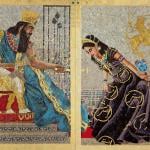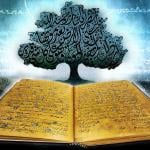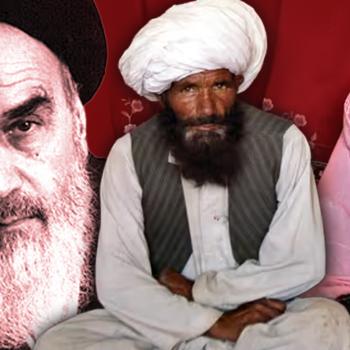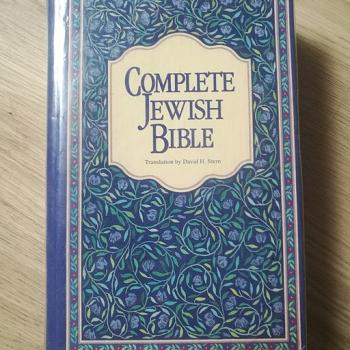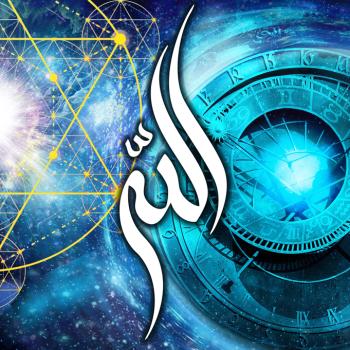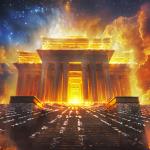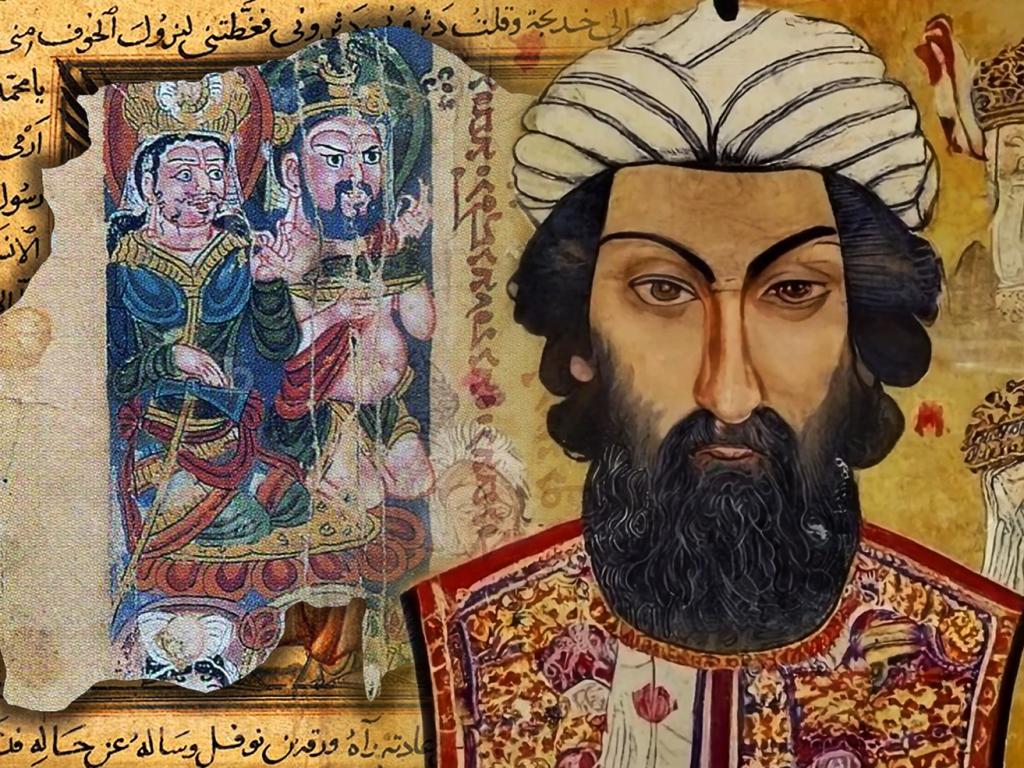
In its entry on “Muḥammad,” the Encyclopaedia of Islām cautiously explains, “the sources for the life of Muḥammad fall into overlapping categories.” These, it asserts, “call for a variety of methods of analysis.” Acknowledging the preference for the Qur’ān, the Encyclopaedia characterizes it as “the most difficult to utilise as a historical source.” In this paper, I will survey the works of largely contemporary authors, which examine the biographical sīrah literature; created not only to supplement the Qur’ān but also to give its āyāt context. Not all of these authors are interested in pursuing the “historical Muḥammad.” Some are interested in how the Muslim tradition sees Muḥammad. All of these, however, can help us in a more accurate assessment of history and an understanding of Islāmic origins.
I will categorize these sources under the following sections: First, “The Sīrah Source,” describes the biographical material. Next, “Faith and Belief,” named for Wilfred Cantwell Smith’s, examination of the role of “faith” amidst a maelstrom of changing doctrine. “Textual Analysis,” will deal with Annemarie Schimmel’s And Muḥammad is His Messenger, as well as Uri Rubin’s Eye of the Beholder, which examines the source materials themselves, making no attempts at critique. The approach of the classic work Muḥammad Prophet and Statesman, by Montgomery Watt, will survey the approach of a previous generation’s Quest for the historical Muḥammad, in the section entitled “The ‘Last Orientalist’ and the Sīrah Literature.” Finally, in “Islāmic Origins and Muhājiriyyah,” I will deal with Patricia Crone and Michael Cook’s infamous theory of “Hagarism,” its weaknesses, strengths and unexplored avenues which may provide us access to a more historical vision of Muḥammad.
The Sīrah Source
The Sīrah Rasūl Allāh composed by Ibn Isḥāq (d. ca. 767–770 CE) has traditionally been regarded as the earliest biography of Muḥammad. To frame this effectively within historical context, we might imagine the first biography of Abraham Lincoln having been written just after the fall of the Twin Towers. The Sīrah accounts were created in part from merging the maghāzi, battle narrations, that predated them. Quite a bit of what is present in the Sīrah, however, cannot be dated to any earlier source than Ibn Isḥāq.
Though it was originally written a century and a half after Muḥammad, the work has survived only through the recensions of Ibn Hishām (d. 833) and At-Ṭabarī (838-923 CE). Much of the material is parallel in each source. Nevertheless, there are some significant differences. Ṭabarī, for instance, is the source of the infamous “Satanic Verses” account, and in both cases, Ibn Isḥāq tells of the controversial marketplace massacre against the Banū Qurayẓah.
Such imminent authorities as imām Mālik ibn Anas (c. 711 – 795) vehemently opposed Ibn Isḥāq, calling him a dajjāl min dajājilah (an Antichrist impostor from amongst the Antichrist impostors).[1] While Ibn Isḥāq does provide a cohesive biography, his methods were directly attacked by this Medīnan contemporary. This criticism stemmed from his use of “unheard of” stories,[2] and in many of his more controversial cases, his citation of asānīd only for minor details.[3]
That Ṭabarī alone accounts for the “Satanic Verses” story would seem to indicate that even those who preserved elements of the original Sīrah of Ibn Isḥāq, regarded some of his stories as over the top. Nevertheless, as the first noted biography of Muḥammad, Ibn Isḥāq quickly became a resource that all subsequent literature of this milieu would draw from. This attests to the socio-religious need it filled, but also to the unlikelihood of its general historicity. Had these stories, by and large, actually traced to well-known events, we should expect many people to have documented them, even before Ibn Isḥāq. We should, for example, at the very least have expected the Jewish neighbors of the Banū Qurayẓah to write about a tribal genocide. Why do we find nothing of the source from the Jews of Palestine, or the migrating Medīnan Jews to Syria[4] prior to Ibn Isḥāq? It would seem that Ibn Isḥāq did not document a biography of Muḥammad, in the careful sense that we have come to expect a biographical account to. He was instead the creative mind who literarily composed the mythic Muḥammad.
This dilemma notwithstanding, the situation is quite similar to that of the historical Jesus. There is indeed a historical Muḥammad, buried within the myth that encases it. Our subsequent authors differ regarding whether or not one should try to excavate that historical personage. If they find the Sīrah account too mythic to extrapolate historical truth from, they will tend to focus on how the mythic Muḥammad features into the lives of Islāmic pietists, as we see with Schimmel and on a more intellectualized level, Rubin. Others will examine the material critically, drawing in contemporary third party sources, even exclusively third party sources in the case of Crone and Cook’ Hagarism.
Faith and Belief
Before exploring the aforementioned, a more fundamental question must address the difference between not only the historical Muḥammad and the mythic Muḥammad of the Islāmic Faith, but also what this faith means and how we are to understand it in relation to such an intellectual pursuit. If there is a discrepancy or conflict, the traditionalist Muslims will choose what they believe is faith. Indeed, within the nuance of this phraseology lies the key to our next author’s point. The Encyclopaedia of Islām authoritatively explains, “The theological answer” regarding Islāmic origins, “is obvious and indisputable for the believer.” However, if it is “taken alone as the explanation of the Prophet’s success,” then this oversimplification “runs the risk of making him a mere agent of divine action.”[5] Though literary accounts of Muḥammad grow more elaborate and impressive with passing generations, the refusal to acknowledge any earthly, historical explanation to the evolution of Muḥammad makes him appear rather unimpressive until the shining moment that revelation happens upon him.
Wilfred Cantwell Smith hones in on the linguistic difference between the oft-amalgamated “faith” and “belief,” noting that it has only been a recent phenomenon that “the matter of believing received central attention.” The traditional emphasis, Smith explains, was on faith, an altogether “different matter”[6] that “has generally been regarded as almost the most important of all human qualities.”[7]
Like Annemarie Schimmel and Uri Rubin (who we will explore as something of “Historians of Religious Attitudes and Beliefs”), Smith asks “what can our present awareness of the world history of religion and comparative culture contribute to our understanding of man; and particularly, of faith[?]”[8] Once the difference has properly been ascertained, he posits that it is impossible to “condemn our neighbours or deprecate their faith on the grounds that they have believed different from us.” Smith rightly observes that in any tradition, “beliefs have changed, and will go on changing.”[9] To this end, we might understand that a harmonization is possible between the historian in quest of a more accurate understanding of the historical Muḥammad and the individual of faith who progressively seeks to accept both spiritual inspiration and the new revelations uncovered by Higher Criticism and scholarly methodology.
Smith is not directly interested in meeting the Historical Muḥammad, or in deciphering Islāmic Origins. He says that instead, his concern is with “not only the meaning that person’s tradition has for him or her, if they are involved, but more significantly, the meaning that life and the universe have for them, in the light of their involvement.”[10] He asserts that an outsider has no other “option but to hold that the Qur’ān becomes (and keeps becoming), a religious document because, and insofar as, some men and women direct to it, generation after generation, their capacity to become religiously involved.” For Smith, this is the foundation, though it should be observed that such a study and such a premise does not in any way deny the historical quest of piecing together a cogent argument for Islāmic (or even Qur’ānic), origins.[11]
Smith refrains from the term “religion” for “observable forms,” choosing “Islāmic tradition” rather than “Islām,” which he defines as “potential pattern [of behavior] for personal involvement, which becomes religious as it expresses or elicits men’s faith. It is faith that generates the tradition in the first place, and that continues to be its raison d’être.”[12] Indeed, Smith determines that “it is the faith of Muslims that has made the Qur’ān the Word of God. It is the faith of men and women that elevates a system of symbols to the religious level. Without this human involvement, the system would remain inert.”[13]
“Over the coming century,” Smith envisions, this study “will be supplemented by equally elaborate studies of faith.”[14] Smith purports that “recent tendencies” to converge faith and belief[15] gloss over the reality that “faith is deeper, righter, more personal. Belief, or imān on the other hand, is simply “the holding of certain ideas.”[16] The Arabic amana is juxtaposed with zanna which Smith translates in the latter instance, as in Modern Arabic, as “to think” or “hold an opinion.”[17]
A man may correctly believe Bern to be the capital of Switzerland, though “he himself is not sure.” That “his opinion happens to be correct,” is irrelevant to his lack of personal, certain knowledge, since he holds this opinion “with a certain tentativeness.” Another man too may believe, falsely in this case, that Geneva is the capital of Switzerland. In either case, he has no knowledge, “no matter how strongly” he believes he is right.[18] Though Smith acknowledges that the matter is not always clear cut, with nearly half of the Qur’ānic renderings of zanna speaking in a positive way of thinking or reflecting as leading one to true imān,[19] his thesis is borne out in Sūratun-Nisā’ (4.157), which speaks of those who believe in Jewish culpability for the crucifixion of Jesus as having “no knowledge there from,” instead “following only conjecture.”
Textual Analysis
In The Eye of the Beholder, Uri Rubin cites Josef Horovitz’s attempt to pinpoint the earliest dating for the legendary Muḥammad of the Sīrah accounts.[20] Believing that the critical minded reader “could distinguish between the legendary and the real Prophet,” Horovitz went so far as to advance that the scholar could even get inside the mind of the historical Muḥammad, and determine how he “really thought and acted.”[21] More recently, Rubin explains, Rudolf Sellheim published a literary analysis of Ibn Isḥāq’s Sīrah accounts. Here, Rubin agrees, is a “very clear-cut” differentiation between the creation of a literary character and the historical Muḥammad.[22]
Sellheim refines three major stages in the literary development of the story of Muḥammad’s life, each represented in a different literary “layer” or “schicht.” The “ground layer” is the most authentic, according to Sellheim, containing traditions which lead towards “actual events.” Next there is the “first layer.” in which the legendary image of Muḥammad evidently from reconfigured Jewish, Christian and Persian material. Finally, there is the “second layer” in which political interests of various Islāmic groups “manipulate” and “embedded” within the text.
Rubin explains that, in spite of these studies, he is not asking “‘what really happened’ in Muḥammad’s times.” Rather, he deals with the “manner in which the texts tell the story,” – as we will see in Schimmel’s work – how these accounts evolved and how their development tells us about their respective communities.[23] Rubin rejects what he considers an “Orientalist” enterprise, one which he admits having participated in,[24] of trying to ascertain the historical Muḥammad,[25] commenting that “orientalists have continued to preoccupy themselves till this very day with problems of historical reconstruction of the life of the Prophet.”[26]
They have noticed the existence of tendentious elaborations and legendary inventions in the early Islāmic biographies of the Prophet, but have always regarded them as a secondary element, distinct from what they have considered to be the “early” and most “authentic” and “human” presentation of Muḥammad. They have believed that the “genuine” display of Muḥammad could and should be distinguished from the “later” legendary and tendentious one.[27]
The use of this dirtied word notwithstanding, every other modern study of Abrahamic religions is concerned with some degree of historical reconstruction, through analysis of the sitz im leben juxtaposed to the sitz im kirche (or here sitz im moschee), of the respective figures. In examples of religious phases and practices deeply buried in the recesses of undocumented history, it is understandable for the aforementioned quest to be “given up entirely,” examining instead the “literary product of Islāmic religious devotion.”[28] For anything as recent and as widely discussed by third party sources, as Muḥammad and his Ummah, such an attitude is insufficient.
While useful and necessary, this secondary form of criticism seems to allow a pass to the Islāmicate Historiography that is neither afforded by modern scholars and historians of Christian Origins, or of Second Temple and Ancient Israelite history. This approach seems to unnecessarily bear the shame of polemical Bad Orientalism which a new wave of scholarship seems desperate to distinguish itself from. It would seem that it is feared to set off in Quest of the Historical Muḥammad, lest he – like the Historical Jesus – differ unimaginably from the figure of legends (thus, uncomfortably putting the scholar at odds with the tradition they are studying).
The “Last Orientalist” and the Sīrah Literature
The Encyclopaedia of Islām explains the history of Western treatment of Sīrah literature, saying that Christian authors “were not only complete outsiders,” but that they were also “intent on using their pens to completely disqualify Islām and thus the Prophet.” To accomplish such polemical endeavor, they “selectively” exploited the Sīrah material and interwove “fictitious elements” with “scornful malignity,” so that in many cases they were “divested completely of their historical value.”[29]
Orientalist sources have not, however, always sought to disprove the Qur’ān. The Encyclopaedia of Islām notes that this applied generally to the “mediaeval biography” oriented towards a thesis “to prove that Muḥammad… could not have been a prophet.” Even in that era, however, the Encyclopaedia of Islām acknowledges “a few exceptions.”[30] In any event, we can say that the ironic trademark of Orientalism was to accept the sources of Islāmic historiography as uncritically as the Muslim world itself. While the Muslim world was interested in a picture of the mythic Muḥammad – imaginatively elaborating upon the earliest Sīrah of Ibn Isḥāq, and also of circulating oral narrations of aḥadīth – the Orientalist tradition very often sought to diminish Muḥammad and neuter any historical account of Islāmic Origins that might tell a story contrary to that which they Church was interested in.
As an example of a more favorable Western treatment, in the 20th century, we have the famed “Last Orientalist,” Montgomery Watt. Watt was both attracted to Islāmic tradition and attested to the prophethood of Muḥammad, while himself remaining a Christian. Though we find critical work from him, there seems a unanimious opinion – throughout the rest of the sources explored here – that he treats the Sīrah source literature, as a whole in Muḥammad Prophet and Statesman, with insufficient skepticism. Related to this, Joseph Schact concludes that traditions “alleged to go back to the Prophet or to his Companions” are the “product of legal, theological and political developments,” in the second century following Muḥammad. Therefore, he says that they lack “any historical value” in documenting the historical Muḥammad or the events of his era. Nevertheless, Watt rejected the applicability of Schact’s findings to the Sīrah literature.[31]
A trademark of an earlier era of scholarship, Watt’s work is largely bereft of specific citation, or footnotes. He often, but not always, writes as though his statements on the events of the Sīrah are established matters of fact, authenticated by multiple contemporary sources of Muḥammad, and from a variety of perspectives. Nevertheless, Watt acknowledges elements of the Sīrah are “only a story, of course,” and that this primitive story-telling was the product of a people “who look upon all writing as akin to magic.”[32]
Watt’s adheres to a view that the colorful tale of the monastic sage Baḥīrā, “though essentially a legend,” is able to “depicts truly” the world in which this historical Muḥammad lived. For him, this potential is where the true value of the Sīrah literature resides. Were there believers in Arabia, awaiting the advent of an “unlettered prophet?” Probably not. The evidence, points to posthumous exegesis born out of Muḥammad’s own mystical understanding of the Jewish scriptures. Uri Rubin correctly directs us to the correlation between the Hebrew goy and the Arabic ummī; relating to the goy gadol foretold to arise one day from Ishmael.[33] We might imagine the psyche of Muḥammad reading his own mission in these words. Either way, there need be no objection to this for the scholar and believer alike.
Watt acknowledges that Muḥammad travelled, in his youth, to Syria with Abū Ṭālib.[34] That Muḥammad would – in accordance with Sīrah and ḥadīth accounts – retire for lengthy periods of subterranean hermitage, is clear. Watt imagines the explanation of this behavior to lie in his “concern for the troubles of Mecca at this period.”[35] The obvious explanation, that Muḥammad was engaged in a regular, deliberate regimen of meditation, learned from his interactions with outside cultures (whether from rabbis or from Eastern traders), is not considered by Watt, who wants to stay closely anchored to the Sīrah account.
The Encyclopaedia of Islām comments on such hinted aspects of Islāmic origins, saying that “because of the nature of the sources and the complexities involved in interpreting them, questions concerning Muḥammad’s emergence as a religious reformer are among the most difficult to answer.”[36] The extent to which “Muḥammad was influenced by the various monotheistic ideas and movements that existed in Arabia in the early 7th century” is, according to the entry, “difficult to determine.”[37] The entry notes Caetani’s argument that Muḥammad’s emergence as a religious reformer was a gradual and “involved” development with cave retreats of “extended periods of meditation and reflection, referred to in the Sīra literature as taḥannuth.”[38]
Noting the flaws of Ibn Isḥāq’s story, Watt admits, “of the fifteen years that follow[ed Muḥammad’s marriage to Khadijah] practically nothing is known.”[39] Is this so different from the “lost years of Jesus,” in the Christian accounts; where a myth was composed of popular stories, embellished and interwoven with both preexisting hero myths and later prejudices and theological tenants of a subsequent religion? Just as the myths follow a similar pattern of development, it might serve to reason that reconstructing the historical figure at their core should then follow the same mythological approach. To that end, Annemarie Shimmel aptly notes an almost “parallel” occurrence of interest in the “historical Muḥammad” with the Leben-Jesus-Forschung, traditionally said to have begun with Albert Schweitzer.[40]
Mentioning Waraqah, Watt seems content to accept that he was a Christian Arab of some sort. Nevertheless, he paradoxically acknowledges that “the average Christian Arab probably had no direct knowledge of the scriptures.” There is some evidence for this claim in the apocryphal references to noncanonical Christian stories throughout the Qur’ān; obviously addressing the popular stories of the Christian Arab community in the region. But if Christian Arabs were not thought to have direct knowledge of the Gospel accounts, does Waraqah actually fit the bill?
We might consider Rubin’s comment that “the Anṣār are said to have been descendants of those Jewish rabbis” of the time of the tubba’, the ruler of Yemen, “Tubān As`ad Abū Karib.”[41] Reflecting then on the tradition from the Egyptian Yūnus Ibn Yazīd (d. AH 159), also cited by Rubin,[42] that Waraqah “wrote Hebrew, and used to copy passages from the Injīl in Hebrew…” Whatever sect Waraqah was, if this is true, it is clear he was not of any known brand of Christianity, but more closely resembles the `Īssuniyyah[43] which appears on the pages of history in their aforementioned revolt against the Abbaasid Caliphate shortly after its inception.[44]
…and Muḥammad is His Messenger
Annemarie Shimmel opens her work by commenting on a manuscript from Iran, dated to the twelfth century. Using this as the header for different chapter openings, she observes that it “celebrates” the second half of the Shahādah “in a tangible way,” and highlights “the central position of the Prophet in the religion of Islām.” The profession of the Unity of God, along with the rest of the Kufic script of Sūratu-l-Ikhlās is written in an otherwise beautiful calligraphy, but utterly inferior to that “celebrating” Muḥammad. In this way, Muḥammad himself emerges as the borders, which define “Islām as a religion.”[45] Commenting to this effect, Smith hits the proverbial nail on the head, in saying that “Muslims will allow attacks on Allāh; there are atheists and atheistic publications, and rationalist societies; but to disparage Muḥammad will provoke from even the most ‘liberal’ sections of the community a fanaticism of blazing vehemence.”[46]
Over the course of the centuries, Schimmel asserts the historical personality of Muḥammad had “almost disappeared behind a colorful veil of legends and myths; the bare facts were commonly elaborated in enthusiastic detail, and were rarely if at all seen in their historical perspective.”[47] Schimmel concludes, “‘the quest for the historical Muḥammad’ is, as numerous studies of his life show, a seemingly impossible undertaking.”[48] Shimmel’s work however, is far from an attempt to construct a realistic biography of Muḥammad. Instead, she seeks to follow on Tor Andrae’s Die person Muḥammads in lehre und glaube seiner Gemeinde (1918), in depicting the role of the character Muḥammad in “Islāmic piety.”[49]
Schimmel concludes that the Qur’ān being the only source to actually have emerged contemporary to Muḥammad, there are but “allusions”[50] to the historical Muḥammad or his Ummah. As the “raw material” for the later Sīrah accounts derives from “very early” maghāzi accounts, Schimmel decides, “the charisma of a true religious leader can be better recognized from such legends than from the dry facts of his life.”[51]
It is not without irony however, that “veneration of the Prophet and the interest in even the smallest details of his behavior and his personal life grew in the same measure as the Muslims were distanced from him in time… adding even the most insignificant details (thus, that he had only seventeen white hairs in his beard).”[52] As Schimmel phrases it, “the ṣaḥīḥān are so highly esteemed in Muslim circles that Bukhari’s ṣaḥīḥ was often regarded as second in importance only to the Koran.”[53]
Perhaps the most telling example of this runaway train of embellishments is Al-Kitāb ash-Shifā’ fī ta’rīf Huqūq al-Muṣṭafā written by Qadī `Iyad. Basing his work off of Tirmidhī, this text quickly became held in such esteem that to even possess a physical copy was to be protected by a talisman, that if “found in a house… will not suffer any harm, and a boat in which it is, will not drown [sic]; when a sick person reads it or it is recited for him, God will restore his health.”[54]
Islāmic Origins and Muhājiriyyah
Harald Motzki writes in “The Murder of Ibn Abi l-Huqaya: On the Origin and Reliability of Some Maghāzi-Reports,” that “our sources for a biography of the Prophet Muḥammad must be classified as traditions,” from the perspective of historical source criticism. Motzki explains what “every historian knows;” that the “informative value of the kind of sources termed traditions is blurred by several limitation.” He explains that this is not unique to the quest for the historical Muḥammad, yet we cannot pretend that he is exempt from these universal limitations.
Traditions are subjective due to their choice of what they mention and what not; they put facts into a certain perspective, sequence and connection; and they use topoi or even create facts which have never existed or not in the manner that they describe them.[55]
Thus, in approaching tradition sources, whether related to Muḥammad or any similar historical figure, Motzki explains we must treat them like “pieces of a broken mirror.” This, he says, is both due to their inherent shortcomings and in that they “can be used to reconstruct historical reality.”[56]
The tract Doctrina Iacobi, is an Anti-Jewish, Greek work, written in the form of a dialogue between Jews set in Carthage in the years 634 CE. Patricia Crone and Michael Cook deduce that it was most likely written in Palestine within a few years of this date.[57] Reference is made, at one point in the argument therein, to then current events related to the Arab military campaign in Palestine. This takes the form of a letter from a certain Christian convert from Judaism, named Abraham.
“Truly these happenings today are works of disorder… But you go off, Master Abraham, and find out about the prophet who has appeared.” So I, Abraham made inquires, and was told by those who had met him: ‘There is no truth to be found in the so-called prophet, only bloodshed: for he says he has the keys of paradise, which is incredible.” [58]
Crone argues that the presence of this “doctrine of the keys” – something which a Byzantine oath of abjuration of Islām mentions, yet disappears from Islāmicate record very early on – dates the work very early.[59] Crone, however, highlights the most peculiar finding in the Doctrina, testimony that Muḥammad was “preaching the advent of the anointed one who is to come.” The core of Muḥammad’s message, in the earliest testimony available to us outside the Islāmic tradition, appears in the unmistakable form of “Judaic Messianism.” An echo of this is also found in a “confused reflection” within Theophanes’ account of Islāmic origins being the result of “Jews who take Muḥammad to be their expected Christ.”[60]
Taken as a whole, the first Hijrah Century Jewish sources make it quite clear that the Arab conquest was widely hailed among contemporary Jews as a divine intervention by God on behalf of “His People” and was thus regarded “as an event full of promise for the future.” Indeed, contemporary Jews of Palestine spoke appreciatively of the coming of `Umar al-Farūq and his forces.[61] An account attributed to Rabbi Shimon bar Yoḥai, writing during the period of the Arab conquest, describes `Umar as “a lover of Israel who repaired their breaches,” going on to insist that “The Holy One is only bringing the Kingdom of Ishmael in order to help you from the wicked one (Christians).”[62] This Jewish document widely circulated during the first century of Arab rule, (notably before Ibn Isḥāq), described the emergence of the Islāmic forces as “an act of God’s mercy.”[63]
When he saw the kingdom of Ishmael that was coming, he began to say: “Was it not enough, what the wicked kingdom of Edom did to us, but we must have the kingdom of Ishmael too?” At once Metatron the prince of the Face answered and said: “Do not fear, Son of Adam, for the Holy One, blessed be He, only brings the kingdom of Ishmael in order to save you from this wickedness. He raises up over them a Prophet according to His will and will conquer the land for them and they will come to restore it in greatness, and there will be great terror between them and the sons of Esau [the Byzantines].” Rabbi Shimeon answered and said: “How do we know that they are our salvation?” He answered: “Did not the Prophet Isaiah say thus: “And he saw a troop with a pair of horsemen…?” Why did he put the troop of asses before the troop of camels, when he need only have said: “A troop of camels and troop of asses?” But when he, the rider on the camel, goes forth the kingdom will arise through the rider on an ass. Again, “A troop of asses,” since he rides on an ass, shows that they are the salvation of Israel, like the salvation of the [Messianic] rider on an ass.”[64]
Corroborating these Jewish origins are trends in early imāmī proto-Shī`ism. In Motzki’s compilation of essays, Maher Jarrar notes, in his “Sīrat Ahl Al-Kisā,” a report concerning the Shī`ite Imām Muḥammad al-Bāqir “who was heard reciting Elijah’s prayer in Hebrew.”[65] As well, Jarrar comments, on an isnād said to go back to Al-Bizanṭī-Abān-Abū Baṣīr to al-Bāqir or his son Aṣ-Ṣādiq, an account from Majlisī’s voluminous Bihār al-Anwār.[66] Like Ibn `Arabī, the ḥadīth asserts that “Isaac, and not Ishmael, was the one to be sacrificed.” Jarrar comments further that this issue “has always been controversial among Muslim scholars, whether Shī`ī or Sunnī, although the majority later agreed by consensus doctorum that the boy was Isaac.”[67] In the first centuries that followed, Jarrar explains, “some Persian scholars claimed that the Persians were descendants of Isaac.”[68] Shī`ī examples of such Jewish content are so replete within the traditions, that a work such as this could not even adequately glance at them.
Crone and Cook note that “the warmth of the Jewish reaction to the Arab invasion attested by the Doctrina and exemplified by the Secrets is far less in evidence in later Jewish attitudes.” Furthermore, they note that it is “entirely absent” from any variation of Christian sectarianism.[69] This is hardly surprising, as the mission of the Arabs was to recapture the land from the Christians who had subjected Palestinian Jewry to some of the most abusive humiliations up to that time.
To this end, we still see nothing extra-Judaic about the movement, even if clearly sectarian and millenarian in nature. The Doctrina asserts that the group intermarried, apparently freely, with Palestinian Jewry, referencing the Jews “who mix with the Saracenes.”[70] Indeed, the convert from Judaism to Christianity who wrote the Doctrina asserts that the Jews and “Saracenes” – still not using the term “Muslim” as a title of a separate religion, but referring to the peoples ethno-nationally – worked in tandem against Christianity. He insists, as well, that he will not “deny Christ, the son of God,” even if the “Jews and Saracens” catch him and “cut him to pieces” for it![71]
To the author, the Jews and Arabs worked together as a unified force, just as we see in the same era in Andalusia, where the result – up until the invasion by the brutal Al-Mohades – was an era of cooperation and overt cross pollination. To Crone and Cook, the invading force was Judaic, albeit heterodox:
There is nothing here to bear out the Islāmic picture of a movement which had already broken with the Jews before the conquest, and regarded Judaism and Christianity with the same combination of tolerance and reserve.[72]
Crone notes the indistinguishableness of Jews from the numerous other nameless Arab tribes in the “Constitution of Medina;” all described as one Ummah.[73] She points out further “There is no good reason to suppose that the bearers of this primitive identity called themselves ‘Muslims.’”[74] She is right, the Qur’ān is interested in this term as a description of those who do an activity, no different than the terms muttaqūn, or mu’minūn (مؤمنون, a clearly Jewish root and concept, as evidenced in Maimonides “Thirteen Principles:” מאמינים, e.g. “אני מאמין…”), in the positive instances, and negatively kāfirūn (كافرون, another Jewish concept – koferīm כופרים “those who conceal” – and Hebrew root), or the more ambiguous munafiqūn (منافقون, “those who do nifāq”).
This acknowledgement seems fundamentally at odds, however, with later decision of the work, to ascribe a Samaritan, extra-Judaic inspiration upon Muḥammad. These are apparently two separate, forcefully conjoined, theories of Islāmic origins, and do not as easily blend as Crone and Cook might have liked (or presumed). Had Muḥammad been inspired by Samaritanism, we might logically imagine him to have been from the outset. If this was a later inspiration then the problem remains that we should not expect such close ties between Rabbinic Jews and Samaritans or those who had deviated even further from the mainstream of the dominant Jewish meme. Thus, it seems either that Crone and Cook’s earlier arguments are correct, or their later ones are, but not both simultaneously.
Indeed, even the unfortunate term “Hagarism” – which they arrive at as the earliest title of the Muḥammadīyyah[75] due to the transliteration of Muhājirūn in the Greek and Syriac sources employing Magaritai and Mahgraye[76] – derives from an unconvincing ascription of Muhājirūn (مهاجرون) to an Arabic root in the name Hājjar; rather than the etymology of this name being a transliteration of the verbal Hebrew Hegirah (הגירה). i[77] We should grammatically expect a name like Hājjarūn, or the Hājjariyyah, for ”Hagarism,” not Muhājirūn. It would seem then that Crone has an incredibly strong argument, buried within layers of weaker arguments that attempt to situation the Muḥammadī movement outside of the fold of Jewish sectarianism.
In Hebrew, which both Hijrah and Hājjar derive, the name is composed of the definite article Ha, and the term for a “stranger,” literally meaning a “convert,” in its oldest sense: ger. Thus, Ha’gar (הָגָר) is appropriately the designation for Abraham’s consort.[78] Thus, “Muhājirūn” would literally, in a Qur’ānic-Arameo-Arabic understanding mean “those who converted,” perhaps even implicitly “those who converted like Hājjar.” Had Crone considered this, she might have realized that “Hagarism” would be a different way of saying “Proselytism” or “Converting.” The only question then remains, “converting to what?”
Crone and Cook do not go far enough with their primary conclusions, and yet they go in rather strange directions with regards to others. Thus, though they accept that the Hagarenes were an expression of “Jewish messianism,”[79] they does not make the deeper connections such as those we find from Chaim Rabin, that the Muḥammadī community was a sectarian expression of Judaism. Crone’s position is ambiguous, as her evidence argues for this (and in some ways she says as much), but does not apparently connect this realization – and the additional conclusion the Muḥammadī Jewish messianism broke with Judaism notably in Muˁāwīyyah’s[80] orientation towards Christianity[81] – with the essential Jewishness of the Muḥammadī movement. Indeed, as the Encyclopaedia of Islām authoritatively declares, “historians and biographers of Muḥammad past and present have only begun to tap this rich source,” of the Sīrah and early accounts of Muḥammad, as they “requires specialised knowledge and a variety of historical and literary critical methods in order to reach sound conclusions and plausible hypotheses.”[82]
Endnotes
[1] Presumably referencing a popular tradition claimed to have originated from Muḥammad, that there would follow “thirty” imposters after his death. Yāqūt, Mu`jam al-Udabā’, (Cairo, 1935-38), II, p. 400; cited in Barakat Ahmed Muḥammad and the Jews (New Delhi 1979), 11 [2] Ibn Sayyid an-Nās writes that, “Ibn Isḥāq followed these reports in his maghāzi without necessarily ascertaining the true facts whereas Mālik himself did not report except from reliable men.”Ibn Sayyid al-Nās, Vol. 1, p 17
[3] Citing no one for the important claims shelled within the husk of these irrelevancies. James Robson, “Ibn Ishāq’s Use of the Isnād” Bulletin of the John Rylands Library, Vol. 38, 1955-56, p. 451; cited in Barakat Ahmed Muḥammad and the Jews (New Delhi 1979), 13 [4] Itzhak Ben-Zvi, The Exiled and the Redeemed. (Philadelphia: Jewish Publication Society of America, 1957).147 [5] C.E. Bosworth, E. van Donzel, W.P. Heinrichs and Ch. Pellat, Assisted by F.Th. Dijkema, P.J. Bearman. “Muhammad.” In Encyclopaedia of Islam, by Brill, Vol. 7. (Bedfordshire: Brill, 1960-2005), 360 [6] Wilfred Cantwell Smith. Faith and Belief: The Difference Between Them. (Boston: Oneworld Publications, 1979), vii [7] Smith, vii [8] Ibid, viii [9] Also vice versa, he adds, “beliefs have at times remained relatively constant, while faith has varied.” (Smith viii) [10] Smith 3 [11] This is true regardless of whether the individual is an outsider or a critically-minded insider. Smith 6 [12] Ibid, 4-5 [13] Ibid, 4 [14] Ibid, 8 [15] Ibid, 9 [16] Smith 12 [17] Ibid, 39 [18] Ibid, 35 [19] “…it is not difficult to see why a notion of believing has got into the renderings.” Ibid, 38, [20] Uri Rubin. The Eye of the Beholder: The Life of Muhammad As Viewed By The Early Muslims. (Princeton: Darwin Press, 1995), 2, citing Josef Horovitz, “Zur Muḥammadlegende,” Der Islām 5 (1914), 41-53 [21] Horovitz, published in Gottingen in 1932. The English translation by Theophil Menzel is entitled Mohammed, the Man and his Faith (London, 1936), cited by Rubin, 2 [22] Rubin 2 [23] Rubin 1 [24] Ibid, 3 [25] Ibid, 1 [26] Ibid, 3 [27] Rubin, 1 [28] Ibid, 3 [29] Encyclopaedia, 378 [30] Ibid [31] Harald Motzki. The Biography of Muhammad: The Issue of the Sources. (Boston: Brill, 2000), XII [32] Montgomery Watt. Muhammad Prophet and Statesman. (London: Oxford University Press, 1961), 2 [33] Rubin, 24 [34] Watt, 8 [35] Ibid, 14 [36] Encyclopaedia 362 [37] Ibid, 363 [38] cf. Watt, Mohammed at Mecca, 44 [39] Watt, 12 [40] Annemarie Schimmel. And Muhammad Is His Messenger. (Chapel Hill: The University of North Carolina Press, 1985), 6 [41] Rubin, 45 [42] Ibid, 106-7 [43] I have here selected an Arabization based upon the Jewish rendering of the word – both with Samech and a Nun rather than a Sin and Waw – in the belief that the Jewish community was aware of the identity of this group and thus called them by their proper name. Thus, the `Arabic `Īsāwiyyah, by which they were also known, was either a play on words, or simply a mistake by the Muslim community that assumed this was what the similar sounding name meant, due to their acceptance of Jesus (`Īsā). This is, however, a large claim and one that is too big to address here, though it is worth mention that Chaim Rabin’s conclusion would fit exceedingly well with what I am proposing. [44] According to our Karaite source, the `Issuniyim Jews taught the prophethood of Jesus and Muḥammad, and though affirming their subordination to the Torah (not the reverse), were said to have been instructed by Abu `Īsā to study both the Qur’ān and Injīl, which they were encouraged to study, along with the Torah. [45] Schimmel 3 [46] Ibid, 4 [47] Ibid, 6 [48] Watt, 10 [49] Schimmel, 7 [50] Ibid, 9 [51] Schimmel, 9 [52] Ibid, 32 [53] Ibid, 27 [54] Ibid, 33 endnote 38 [55] Emphasis mine. Motzki 171 [56] Ibid, 171 [57] She reasonably notes that the lack of knowledge of the outcome of the events argues for an earlier date. See F. Nau, “La Didascalie de Jacob,” in R. Graffin and F. Nau (eds) Patrologia Orientalis, Paris 1093-, vol. viii, pp 715f. [58] Doctrina pp. 86f [59] Patricia Crone, Michael Cook. Hagarism: The Making of the Islamic World. (Malta: Cambridge University Press, 1977), 4 [60] Chronographia, A.M. 6122; cited in Crone’s Endnotes, 153 [61] T. W. Arnold, The Preaching of Islām (London, 1913), 132; and S. D. Goitein, Jews and Arabs, Their Contacts Through the Ages (New York: Schocken Books, 1964), 62 ff pp 8 [62] S. W. Baron, A Social and Religious History of the Jews (New York, 1952), III, 93 [63] S.D. Goitein, Jews and Arabs, 63 [64] Cited in Crone 5 [65] Motzki 119; Ṣaffār al-Qummī, Baṣā’ir ad-Darjāt, 335-54l Kulīnī, al-Kāfi, I, 227-8 [66] Bihār al-Anwār XII, 128 [67] Motzki, 118; Ṭabarī, Jāmi` al-Bayān, XII, 30-33; Tabrisī, Majma` al-Bayān, XI, 158, 164-5 [68] Motzki, 118; W.M. Watt, “Isḥāk,” in El, IV, 109-10 [69] Crone 6 [70] Ibid [71] Ibid [72] Ibid [73] Crone 7. While this is noted, it is further worth mentioning that this Constitution comes to us first through Ibn Isḥāq’s sīrah. Still, the anomalous nature of such a claim in Ibn Isḥāq’s writings fits Higher Criticism’s “Criteria of Embarrassment,” attesting to its likelihood. [74] Ibid, 8 [75] As Schimmel, explains: “As much as the Muslims in general refuse to be called Muḥammadans, the expression Ṭarīqa Muḥammadiyya, ‘Muḥammadan Path,’ was used by quite a few premodern mystical groups who wanted to express, with this designation, their faithful adherence to the sunna of the Prophet to the exclusion of later usages that had been adopted into the mystical way of life.” [76] Stated by Crone throughout. [77] Interestingly, numerous proponents of the school reeling from Wansbrough, such as Christoph Luxemburg, and many others there besides (such as Author Jeffery), have written extensively on not only Hebrew and Aramaic borrowing in the Qur’ān, but of a likely primary reading of Qur’ānic Arabic as a form of Aramaic. With this understanding, we must look at the Hebrew meaning, not merely etymology, of the name Hagar. [78] Thus, we would be prudent to recall the ḥadīth admonition that the vigilant mu’minūn should “pay glad tidings to the western strangers (ghurabā`),” for Islām “began as something strange and will be brought back to life as something strange (غريب, gharīb).” Though this narration was undoubtedly distorted and translated into the newly codified Arabic language, the Jewish usage of this term “strangers” would have been gerīm (גרים). The ḥadīth is irrelevantly concerned with the Western origins of these strangers, and thus appropriates the ghayin-ra’-ba’ root. This term was a likely later synonym for muhājirūn, due to the embracing of the Muḥammadī movement by the Westerners (غرباء, ghurabā`), who were “foreigners.” [79] Crone 10 [80] The first Umayyad Caliph and the son of Muḥammad’s archenemy Abu Sufyan, Mu‘āwīyyah waged war against ` Alī ibn Abī Ṭālib and his son, Yazīd was the opponent of Husayn ibn `Ali and his outnumbered companions on the fields of Karbalā’. [81] Crone 11 [82] Encyclopaedia, 361Bibliography
C.E. Bosworth, E. van Donzel, W.P. Heinrichs and Ch. Pellat, Assisted by F.Th. Dijkema, P.J. Bearman. “Muhammad.” In Encyclopaedia of Islam, by Brill, Vol. 7. Bedfordshire: Brill, 1960-2005.
Guillaume, A. The Life of Muhammad. Lahore: Oxford University Press, 1955.
Isḥāq, Ibn. The Life of Muḥammad: A Translation of Isḥāq’s Sīrat Rasūl Allāh. Translated by A. Guillaume. Karachi: Ameena Saiyid, Oxford University Press, 2004.
Jones, J.M.B. “The Chronology of the “Mag̱ẖāzī”– A Textual Survey.” Bulletin of the School of Oriental and African Studies, 245-280.
Motzki, Harald. The Biography of Muhammad: The Issue of the Sources. Boston: Brill, 2000.
Patricia Crone, Michael Cook. Hagarism: The Making of the Islamic World. Malta: Cambridge University Press, 1977.
Rubin, Uri. The Eye of the Beholder: The Life of Muhammad As Viewed By The Early Muslims. Princeton: Darwin Press, 1995.
Schimmel, Annemarie. And Muhammad Is His Messenger. Chapel Hill: The University of North Carolina Press, 1985.
Smith, Wilfred Cantwell. Faith and Belief: The Difference Between Them. Boston: Oneworld Publications, 1979.
Watt, Montgomery. Muhammad Prophet and Statesman. London: Oxford University Press, 1961.
—. The History of Al-Tabari. Albany: State University of New York Press, 1988.
Yar-Shater, Ehsan, ed. The History of Al-Ṭabarī. Translated by Michael Fishbein. New York: State University of New York Press, 1997.


